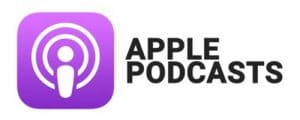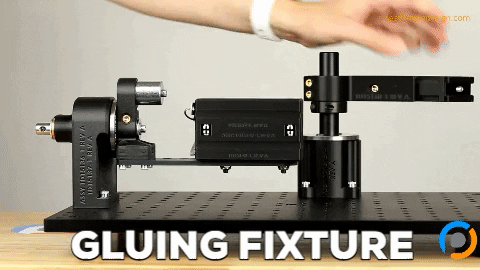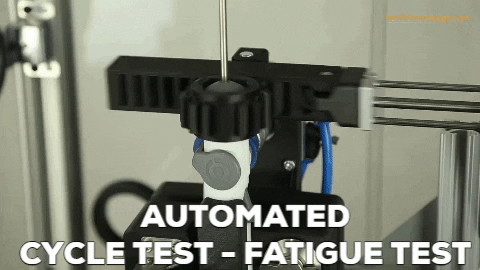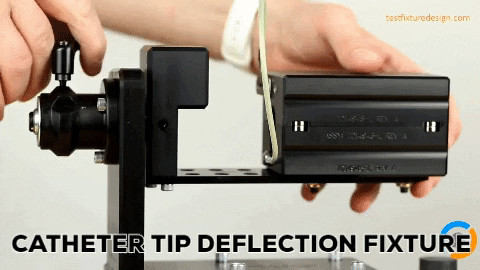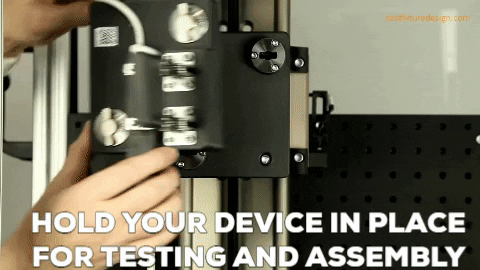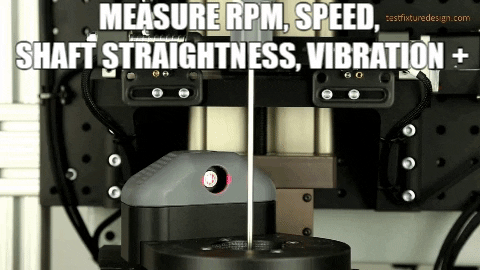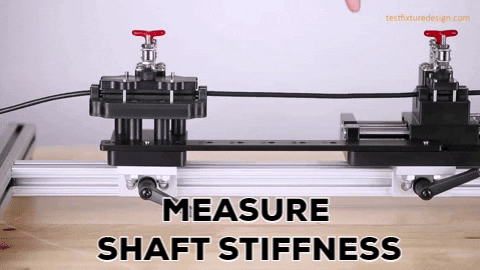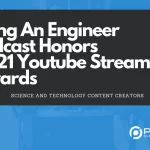Stephen Corner Documenting SolidWorks Designs at Mayo Clinic, Model-Based Definition (MBD)
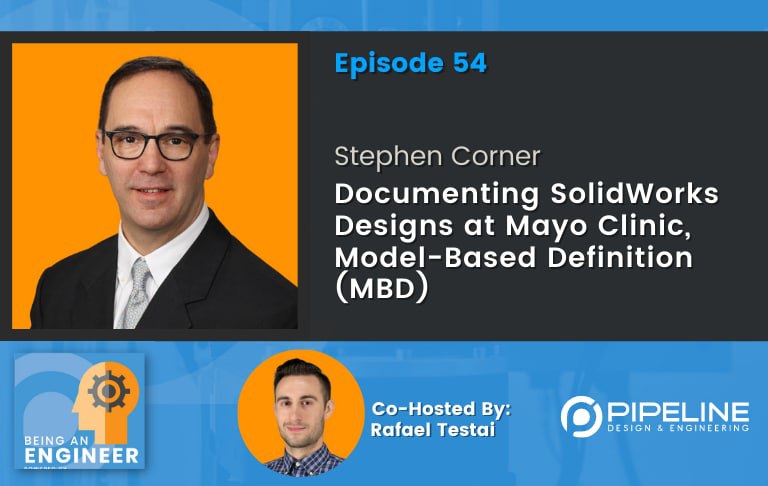
“There are all these different things that we get to work on. And, I love that. That’s what I really like about engineering that I’m not doing the same thing. – Stephen Corner”
Who is Stephen Corner?
Stephen Corner is the go-to person for creative design work at the Mayo Clinic and has been working at Mayo for the past 20 years. In addition, Stephen Corner is also the Chair of the documentations standards workgroup where he figures out how to document SolidWorks designs. Stephen Corner holds a P.E. and is a mechanical engineer. In this episode with Stephen Corner, we discuss the advantages of Model-Based Definition (MBD), and specializing vs. being a jack of all trades.
EXPAND TO VIEW EPISODE TRANSCRIPTION
SUMMARY KEYWORDS
drawing, work, design, model, part, people, model based definition, mechanism, pipeline, engineer, create, solidworks, paper, years, medical device, standards, put, views, podcast, specialize
SPEAKERS
Rafael Testai, Aaron Moncur, Stephen Corner, Presenter
Presenter 00:00
The being an engineer podcast is a repository for industry knowledge and a tool through which engineers learn about and connect with relevant companies, technologies, people, resources and opportunities. Enjoy the show.
Rafael Testai 00:30
Hello, everyone, welcome to the being an engineer podcast. I’m your co host, Rafael Testai. Today we’ve got a special guest. He’s a Principal Engineer at Mayo Clinic. His name is Stephen Corner, and one of our previous guests, Sean Mughelli guts, who’s who was the section head of medical device research and development at the Mayo Clinic. So that’s our previous guest, Sean Sean mentioned, Steve corner, our current guest today as his go to person for creative design work at the Mayo Clinic. And Stephen has been working at the Mayo Clinic for 20 years. He’s also the chair of documentation standards workgroup, he figures out how to document SolidWorks designs. And Stephen is Steve is a mechanical engineer with a P license. So Steve, welcome to the show.
Stephen Corner 01:22
Well, thank you for having me.
Rafael Testai 01:24
Well, first and foremost, why don’t you tell us? How did you decide to be an engineer? What was the story behind that?
Stephen Corner 01:33
I don’t know if we want to spend the whole time talking about that. But I actually, I have always enjoyed science. I mean, through high school and whatnot. I come from a family though of of non science to people. My mom’s car art major, and my father was a journalist. So not a lot of science going on in our household, but I still liked it. And I, I had an of certain affinity for mechanical things and taking things apart. And that kind of, I always thought I’d be an engineer growing up in in high school at least. And then I got to college. And the math got really hard. And I kind of fell in love with geology. So I my degree, and my first degree is in geology. From Michigan State, then I couldn’t get a job and kind of moved out to Colorado. I was a ski bum for a couple of years and then riding the chairlift a guy told me, you know, you really can’t do this your whole life. And I kind of agreed with him. And I thought, Well, I always wanted to be an engineer. So I had residency in Colorado. So I applied at the University of Colorado to go to their engineering school and, and two years later, I was an engineer. So that’s kind of how it happened.
Rafael Testai 02:57
So two years later, did I hear that correctly.
Stephen Corner 03:00
Yeah so my, a lot of my my basic stuff carried over from my first degree, so I was able to, to use that, for all my core stuff. And even the math and everything in geology degree gave me that it gave me you know, a lot of basic science, physics. And, and so that all transferred. So it was it was actually five semesters. So I graduated in the winter to two and a half years, if you will, after I started.
Rafael Testai 03:33
That’s amazing what a coincidence. So my first bachelor’s degree was in molecular biology and genetics. And I went out in the field, but then I came back a couple years ago, to get my second bachelor’s degree in mechanical engineering. And basically, only one semester worth of credits transferred over. I’m basically having to redo another bachelor’s degree, three and a half years of school all over from scratch. And I’m already a year and a half in to the program. But I’m glad that it worked out really good for you, because you only had to do two years when you switch your career.
Stephen Corner 04:09
Yeah, it was I remember it being kind of a deal to go through. But I like I had to write all these things about why this class substitute for this cause and it was even more difficult. Because Michigan State was on trimesters, and University of Colorado was semesters. So I had to create these, you know, explanations of equivalence. And I guess that was my first foray into this whole you know, trying to document things and convince people of things so it did work out and worked out. And then at Colorado, I was only taking engineering classes pretty much so so it was very efficient. At that point, unfortunate for me, because I was pretty much on my own dime at that point.
Rafael Testai 05:00
So that’s a perfect segue onto the next topic. As we said, in the bio, you’re the chair of documentation standards workgroup, and you figure out how to documents all work designs. So take us from a very basic standpoint of understanding, if no one has ever heard of what does documents hard work designs mean, if you could explain what that means, first, very simple. And then talk about it, what you do in regards to that, and Mayo Clinic?
Stephen Corner 05:27
Well, I mean, traditionally, it means creating drawings, two dimensional representations of a three dimensional part. And we abide by a standard, anti Why 14.5 It’s pretty ubiquitous in the mechanical engineering world, that, and that, that calls out all the different things you can and cannot do how you’re supposed to present things. So typically, a typical part we’ll get three will be presented in three dimensions, or three views, front, top and side, and then any additional views that need to be done. So it’s, so that’s what and then, and then assemblies are similarly done work on a 2d, you know, piece of paper, it’s now all virtual or PDFs, but you create these these 2d drawings of, of your 3d part. And that’s how it’s, it’s done. That’s how it’s mostly done. That’s how it’s how it’s, you know, it’s basically just a hold, very similar to how it was done when I first started in engineering, you know, back in the mid 80s, to create paper drawings, and, and so, so that’s, that’s primarily what we do, we, you know, we’re, we’re a medical institution, we make medical, we don’t make medical devices, per se, but we create medical device designs. So we’re, we have to abide by certain standards with regards to that. And so we’re, we do create drawings of our, of our, of our designs, but I see a change kind of a sea change going on. And it’s been going on for quite a number of years now. But I think it’s reaching kind of a head that we’re going to stop creating these 2d representation. And we’re going to go to a, what they call model based definition or are directly working off the models. And we we do that it’s almost like our 2d drawings are, are an afterthought, or something we do for posterity, but not really used, when I create a model of a part, either send it to a 3d printer, where it does not ever get converted into any kind of 2d representation. Or I send it to a machinist, who using their numerically controlled machining equipment creates toolpath and whatnot based off of the model. So. So the model is used exclusively in the drawings are used. Not at all. And so why are we doing that? So I think that that’s going to be a big change in the way we do things. And it already has, we’ve implemented some some kind of, I don’t know what you call it, clergy ways of getting away from actually doing detailed 2d drawings of parts. So so that that’s where we are with it.
Rafael Testai 08:33
No, beautiful. So model based definition is always called.
Stephen Corner 08:38
Yes. So that’s, there’s um MBD for short. It’s, you know, if you Google it, you’ll find a whole bunch of stuff about it. It’s basically working off the model. So there’s, in when you, you know, I think, you know, your, your, some of your previous guests talk a lot about design intent. And a lot of times when we’re making models, if we know we’re going to do a drawing, we just kind of haphazardly put it together, however way we want. And then we convey the design intent in the drawing, that being like whole patterns being dimensioned off of each other so that they stay together, that kind of thing. But if you wanted to do that, in a model based definition environment, you would need to convey that design intent when you’re actually creating the part, which I think is actually the best way to do it anyway. But so, so then that model is then used by the machinists, or by the injection molding house, or whoever to create the model. And that’s, that’s a really great part. And that’s, that’s just a very clean, there’s less chance of errors. There’s all these different reasons for why MBD is, is better. My biggest thing is that it’s better because it’s less More, and I am always trying to reduce the amount of work.
Rafael Testai 10:07
Yeah. Okay, so go ahead, please.
Stephen Corner 10:10
Oh, and I just say we are, if you like a lot of people maybe listening or, or, you know, you’re an engineer you’re working, you’re, you know, we have these great resources now like these outside prototyping houses that make parts for you either 3d printed or, or injection molded. And they don’t want your drawings. They want your, your models. And so you’re you’re basically de facto working in an MBD environment. At that point, you’re, you’re sending them your model, they’re quoting it, they’re making your parts for you. And you know, there’s some blanket tolerance that they’re given, giving you and hopefully that’s okay, if it’s not, then then maybe you do need to document it a little better. But that’s kind of where, where we are, where we’re, we’re sending stuff, internally and externally, without drawings. And, you know, that’s why I say we, I think I’m talking about engineering as a whole.
Rafael Testai 11:15
Understood. So a couple things I’m going to mention here for audience in case, you’re listening to this driving, I know what model based definition is. And I also put up an image on Google, I’m gonna give you a quick visual, just imagine your CAD SolidWorks model by with a bunch of arrows, if you will, pointing to it and pointing out like fillets and different dimensions in the in the model. And they’re calling out the numbers that that assigned basically the geometries and in the values would, how would you describe it? So we give people a visual of what Yeah,
Stephen Corner 11:50
so that’s kind of what it looks like, if you were to look at it. But the you know, the machines that are actually creating the toolpath and whatnot, don’t see all those numbers, they just see the they just see that the the actual geometry. So yeah, so you create, to make it human readable. We, we add these dimensions in the software, SolidWorks has a MBD package, I believe that, you know, parametric technology has, there’s a pro east. So it’s all the big ones have this, these packages built in where you can take your model and add these they’re called annotations. So you create annotation views of different aspects of the design, and you save those and then when the person is reviewing the design, they can bring up those annotation views, you know, virtually and see the 3d part that it’s they’re attached to, and manipulate the model, you know, manipulate the orientation, for views and whatnot. And that’s kind of that’s what I see as being the future of of CAD, and not reviewing, you know, a 2d piece of paper or a representation of a piece of paper on the computer.
Rafael Testai 13:11
I think something, a sentence that you said before we actually started recording the podcast, as we’re warming up, you mentioned that documentation in Mechanical Engineering has been changing, or is changing for the second time, your career. So the first time I guess was from the paper and pen to
Stephen Corner 13:30
Yeah, so when when I first started, you know, in high school in the 70s, you know, that was it was all paper and in in pencil and pen. And we created a blueprint literal blueprints, you know, where you use ammonia to develop the paper and it was crazy. And then when I started engineering, it was kind of a mixed bag of people who are using computers, but not fully. So there are still drafting tables around and, and you, you, you draw a sketch of your design and you take it to a designer, and he or she would would, would convert that into a drawing, you know, a big giant, the size piece of paper drawing. And, and that’s, you know, that’s how it was. And, you know, you see pictures of like Ford Motor Company or Boeing and it was just these giant rooms of drafting tables. And so that that’s how it started. And then, you know, I saw pretty early on, AutoCAD was the, you know, the big thing and and we’re doing all of our designs in AutoCAD and but still printing them out and paper and, and, you know, we had plotters, you know, big platter things. And that’s, that’s kind of how it went. It’s pretty much gone that way since, you know, there have been certainly improvements. We’re not actually using physical pieces of paper anymore, but the whole 2d representation has stayed the same. And so now this changes from Getting rid of that 2d representation and going to a purely 3d representation. You know, you’d have definitely have to have a computer or some way to view it, if for a human being to see it, but But yeah, the whole the whole idea of the 2d drawing. I see that going away.
Rafael Testai 15:22
Well, you mentioned that there’s this meme floating around like a picture. That’s funny a meme floating around the internet that says how it started and how it’s going. And when you said how it started, I mentioned a whole room full of drafting and papers and how it’s going now we have MBD. Pretty cool. So my next follow up question, I have to introduce who we are a pipeline that we host the show. And then I’m going to follow it up with how this relates to what we do our pipeline. So the being an engineer podcast is brought to you by pipeline design and engineering, and pipeline, the company I work at partners with medical device and other engineering teams who need turnkey equipment, such as cycle test machines, custom test fixtures, automation, equipment, assembly, Jake’s inspection stations, and more, you can find us on the web at Team pipeline.us. So here our pipeline, we have very big medical device companies that we’ve done a lot of fixtures for, as I mentioned, they’re a little quick blurb. The thing is when working with, I’m not gonna say any names, of course, just keep it generic. But they’re all still using drawings, all of them. So when is this going to this MBD going to get to the big medical device manufacturers?
Stephen Corner 16:38
I don’t I have not a good answer for that. That, I think big companies, they’re, of course, by their very nature are a lot slower to to adapt, I would probably see. For product design, less emphasis on moving away from paper or not paper, but 2d drawings, just because it’s just, there’s so much history and whatnot. For for that for for them. But smaller companies and dealing with in the prototype world, I see a 2d drawings, that will be the first place where this this starts early adopters. Right? Yeah, it’s gonna be in there. And it already has, like I said, when you when you send a model to be prototype to buy up? No, we have proto labs here in Minnesota. They do, you know, prototype, injection molding, and their, you know, their, their website, doesn’t it just you just load the SolidWorks model write directly onto their website. And then they come back and give you a injection molding quote from that, that there’s that that’s just one of the companies that that does that kind of thing. So yeah, you know, in terms of big, the bigger players, of course, is going to take longer, but working with model shops and in prototype houses, I see that. That’s how it’s already happened. So
Rafael Testai 18:34
just to give people some insights. We have a lot of medical companies that we work with. But some of the bigger ones, we are in October 2021 round, so it’s almost 2022. Some of the bigger ones are using SolidWorks 2019. And it’s not because they don’t have the budget to upgrade. It’s like just moving things upgrading, you have to do it across the whole company. So they’re expected to be probably the least the last ones to adopt MBD. So let’s talk about the efficiency aspect like saving time when you said that it caught my attention and probably a lot of our listeners you said it’s easier to saves you time to do MVD Could you give us like maybe an example if you do a drawing like an assembly drawing a bomb, let’s say has 20 parts 20 components in the bomb? How much less time are you saving using MBD? Well, where are the time savings coming from?
Stephen Corner 19:34
Yeah, I don’t think the time in assemblies. assemblies are pretty easy to document. Why? So there’s at least you’re basically taking something that’s already done and you’re you’re just putting an exploded view putting some balloons on it and creating a bomb. And so that’s almost always almost already kind of automated, I think the big savings is comes in when you’re detailing parts. And so you have this part, you know made might be fairly complicated piece that, you know, so you spend the whole, you’ve already gone through and created all the sketches that are being used to extrude and cut and rotate and what, whatever you needed to do to make the part in your CAD model. And I know hopefully, people listening to this, if you if you’re not familiar with CAD, I’m sorry, I can’t, I don’t know how to say it any, you
Rafael Testai 20:35
know, this is for CAD, people like this specific SolidWorks. And the title,
Stephen Corner 20:40
yeah, you’ve already done all that. All that work. To do that. And now you create, you bring the part into your drawing. And now you do the whole thing. Again, it’s like writing a book. And then going in writing the book, again, there’s no value added in doing that. So is busy work. And so that’s where I think it saves time. And we’ve kind of we’ve done something we’ve instituted in our standards and ability to take a model, put it onto a drawing, put three datums on it, so the part six, and then just put a blanket profile tower until read the whole thing. And you and then reference the model in the notes. And that that basically does almost all of what, what what MBD is, is is supposed to do, you’re still the drawing. So you still have the ability to review and it doesn’t upset your, your flow your your workflow, but you’re not spending you’re spending very, very little amount of time on the actual drawing. So
Rafael Testai 21:53
to put that into context, what’s compare it to how much it will take to do a part strong versus MVD? Are we talking only 10% of the time how much?
Stephen Corner 22:03
It depends on the complexity of the pirate, but I mean, how long do you spend to do a drawing of a, you know, an average part. Say it’s, you know, something that’s intended to hold an air cylinder, say, so it’s a plate with a bunch of holes, and maybe some notches in it. So you go in and you, you, you, you know, bring it up, bring the view up, put their dimensions on it. And so all that time you’re spending doing that what you’ve already done once before, when you created the part to begin with. Now your instead of doing that, you bring the part up, you attach three datums to it, ABC, and then you put in the notes that all dimensions and that called out here are, shall abide by this profile tolerance. And with the datums has indicated, and you just That’s it, you don’t have to detail the part anymore.
Rafael Testai 23:09
Why this is wonderful. This is really wonderful.
Stephen Corner 23:12
And the standards, you know, there’s anti standard, y 14.41, to the kind of the product, digital product definition standard details how it says that you’re allowed to do this, you’re allowed to create a use the model and reference it in your drawing. And so that’s what that’s kind of what we do now, I’d like to see us get away from the drawing entirely. But, you know, we do have a workflow that requires approvals. And, and like I said, we do have certain requirements that were as a, you know, in a medical device, design a situation that require us to have something that we can review. And drawing the drawing. It’s an easy thing to review. So.
Rafael Testai 24:03
So Shawn, Miguel, you got our previous podcast, guests had said that you’re the chair of documentation standards workgroup, and you figure out how to document our designs. Let’s put that into context. Does that mean that other people are designing the parts and then they send them to you and you just do the MBD and the documentation or you do both?
Stephen Corner 24:24
No, no, we’re we’re, we have a group of us. I don’t know there’s about 12 of us that that do? Do design. And we all do do our own drawing. Mostly. So So and then of that there’s a subset of, of machinist and designers of the way designers and engineers that we kind of get together. There’s whenever you have documentation, there’s always some question or something that comes up that that doesn’t, we don’t know how to answer. It’s not addressed by the standard. You know, the fact that we can even use this electronic definition standard, and all is came out of that group. And we meet every so we were meeting quite frequently. But over the last few years, it’s been less and less as less issues come up. But yeah, so we we decide things like, we’re like the Court of Appeals for, for mechanical design. at Mayo,
Rafael Testai 25:35
you mentioned about the pitfalls of specializing in one thing, could you elaborate a little bit more on that?
Stephen Corner 25:43
Okay, that was, I was just kind of telling you about my personal attitudes. So this is a different kind of changing gears a little bit subject altogether? Yeah, yeah. So, so. So I’m very, I feel very fortunate that I work at a place where I can be doing, you know, one day, I’m working on a fixture to, you know, patient and mobilization fixture, which helps, which, in order to hold somebody in the same position for, for some kind of a cancer treatment, and the next day I’m working on something that would hold a mouse in that particular location for, for those are kind of the same thing, but they’re, they’re very different. So are, or a surgical retractor, or a, some way to position the patient can position their eye for a certain treatment or something that would some other effect of the of the filter that would go into place in in the treatment of cancer. So there’s all these different things that we get to work on. And, and I love that that’s what I really like about engineering that I’m not doing the same thing. But when you go through school, and it’s getting worse, even at high school levels, kids are being told to specialize in something. And then you get to college, and you, you specialize in engineering. And even in engineering, you specialize in mechanical engineering than mechanical and specialize in fluids or, or materials or whatever. And you’re going through this progression of specialization until you get out, you might even go and get a master’s degree, and that’s even more specialized in one particular subject. And then you, you, you, you work in that particular thing, your whole your whole life, and I am a, I consider myself a, a jack of all trades, but master of none. And people say why you say that, that’s like a criticism. You’re, you’re you’re not good at anything, or any one thing? And I say no, no, I’m, I’m okay at a lot of things. But I’m not really, really good at any one thing. And I liked I think that’s like, if I was to describe myself in one sentence, that would be it, that I have not a UN. You know, I don’t know how many positions there are in the world, for engineers that are like me, but again, I feel very fortunate that I found this one. And, you know, I think in in the way we work today, we can switch gears midstream and do and I encourage people to do and try a lot of things, a lot of different things.
Rafael Testai 28:49
I appreciate you being so modest when we say that you’re okay, a lot of things. Obviously, if you’re working at Mayo Clinic, your cream of the crop, you’re probably the best at a lot of things, but you just say you’re okay, but I was going to ask you, what are some of those things that you do that you’re okay as well. So
Stephen Corner 29:08
So, so a lot of times we have to, we we we have to write code, say I’m making a device that’s intended to dry blood spots, the other patients are we take we pick people’s fingers and we put the blood onto a onto a piece of paper that creates a blood spot and then we hang them out to dry. Well I had a project where we were asked to make a dryer for this is done, son on adults, but it’s primarily done on on babies, they prick their feet and to get them to get a blood sample and they put it onto a card and then they hang it up on a on a clothesline to dry. And so we we had to invent a or come up With a dryer that would drive the blood spots and control, control the temperature. So to control the temperature, we had to write some code. And I wrote, I had to write, you know, LabVIEW program that, that controls the temperature of the, of the dryer, stuff like that. So, so you, you learn how to write LabVIEW code. And, and that, that was very exciting for me to do that, even though I could have probably offloaded it to somebody to a programmer who knew better. I liked doing that. So I did it. I might, one day be in the machine shop and want to cut something with the lathe. So I asked the machinist teach me how to use the lathe. So I can just make stuff on the lathe. And so I’m making stuff on the lathe. And that’s, that was unnecessary engineering. But it’s, it’s important to get that, that knowledge of how things are done. You know, one day I’m working on fluids, fluids problem using some computational fluid dynamics. Analysis. One day, I’m working on a finite element model of a mechanical structure. One day, I’m just doing straight up, you know, mechanism design, you know, so there’s just a whole host of things that you can, you can do, but, you know, if you’re, if you specialize Justin, I’m just gonna do computational fluid dynamics. And you’ll be really good, you’ll be way better than I could ever be at it. But you, you know, you’re, you’re missing out on the, the, you know, mechanism design or some other.
Rafael Testai 31:41
Let’s talk about that. Let’s talk about that mechanism design, I actually have a post a video, a month of product that I tear apart, it could be anything, one of the most popular ones that I’ve done here, a pipeline, and with SolidWorks. They’re responsive by SolidWorks. So I’m very fortunate to do a hobby, that’s also sponsored. So we I tore apart a handle from my luggage. And this is actually the idea from Aaron Moncure, the founder of pipeline. So we I taught people the mechanism on YouTube. So if anyone listening to this gets on YouTube, when you type in SolidWorks luggage handle, you’ll see the video that I made, it has over 10,000 views and over 100 likes, and like one dislike so everybody loves the video, basically. And I just really like learning mechanisms, how they work internally, it’s like fascinating. So any advice for someone like me, that wants to get better at mechanisms?
Stephen Corner 32:37
Oh, well, you’re doing it, taking stuff apart is, is the best thing or just looking at things and thinking, Well, how does this work? I mean, that’s something I think that is something that I’ve been doing my whole life, but, you know, don’t be afraid to take something apart. I met recommending people go out in their garage and start taking their cars apart. But, you know, don’t be afraid to do that. If you’re if you’re, I mean, just, I had so I do these i i One of your guests was a he made videos, like instructional videos, and I thought wow, you know, I’ve always wanted to do that. I’ve tried to do that. I’m not very good at it.
Rafael Testai 33:24
But ya know, I think that was his name.
Stephen Corner 33:26
Yeah, he, he he had. So he’s got some really good videos about it, in your experience with doing videos. I love i It’s like I take thing like I do in my house, you know, I, I’ve made a video of taking apart my faucet and how does that work and taking apart, I have a I have a Mini Cooper and I took I had to replace the clutch. And so that whole thing was quite a, you know, I wasn’t, but just to not be afraid to do things like that. Because, you know, that’s, that’s how you learn. As far as mechanism design, though, I mean, that’s, that’s where SolidWorks is really good. Just doing being able to model CAD mechanisms, assemblies and, you know, by controlling the, the constraints, you can, you know, rotate things and there’s even, you know, the availability of motor features and things like that, that that allow you to, to do to to actually simulate the motion.
Rafael Testai 34:42
The one thing that I’m not sure if we were the originators but it was certainly our original idea that we have here internally our pipeline, we came up with this called a mental mechanism library, which we suspect that mechanical engineers and people who do a mechanical or mechanism design, they have this mental library of things that they’ve seen across their lifetime, then they probably haven’t written down, but they just have a store in the back of their mind. And when they’re faced with a problem they pull from this mental mechanism library, and that’s how they can solve the problems. Would you agree on that?
Stephen Corner 35:18
I would totally agree with that. That’s how I think that’s, you know, he talks about reverse engineering and all that, I think, almost all my, I mean, I, I can’t, I shouldn’t say this, but I, I copy a lot of things from from this from, from the world, you know, that you, you chances are somebody’s already done what you’re thinking of doing, when it comes to this kind of stuff. So then I have a book, it’s a, it’s like a, it’s an old book, I found, I actually found it at Mayo, on some on a shelf of a guy that had retired. And it was a book of a book of mechanisms. And it just had all kinds of mechanisms in it. You know, the one of my favorites is a Geneva mechanism that you turn to take a a constantly rotating thing, and you convert it into a discrete, you know, incremental motion of movement, like it’s what’s used and what makes a second hand clicking one second intervals, and that just moves smoothly.
Rafael Testai 36:29
Oh, I’m looking at right now Google Images. Yeah,
Stephen Corner 36:32
Neva mechanism, yeah. So that those kinds of things and, you know, just you know, how to take a, you know, a crankshaft as a turn rotation, rotational motion into linear motion. How, how the hand works in terms of opening and closing things, you know, I do that a lot, when I’m working with doing surgical instruments. So, so, you know, those things, we created a generic handle, that we can apply to any number of, you know, it’s like a looks kind of like a scissor handle or hemostat handle how, you know, that size for different sized surgeons, and, you know, kind of off topic, but we’re getting a lot of a lot more women are becoming surgeons than in the past. And so the surgical instruments are designed for men, and they’re typically beggar. And we’ve, we’ve gone in and done, basically reverse engineered various pieces of equipment to make them smaller for a woman’s hand. And so that that’s, that kind of stuff is super rewarding.
Rafael Testai 37:52
Wonderful. Is there anything else that you’d like to share with the viewers? So anything that I haven’t asked you that I should have?
Stephen Corner 37:59
So yeah, so one thing I was gonna say, though, in terms of like, you guys, that pipeline are fairly similar to what how we operate. Kind of like, you know, I’m sure you have projects, and they’re fairly unique. You’re not just making catheters or some some other things. But you’re doing various different pieces of equipment on the year, kind of the difference is, is we’re doing stuff at the front end, for the design, working with surgeons and, and and clinicians in the hospital, and creating that part of it, and then you guys are taking the whatever the devices are that need to be made, and creating, supporting that the creation of those devices in production. And I think that’s kind of interesting.
Rafael Testai 38:58
Well, thank you for that. And thank you for looking into what pipeline does a team pipeline.us I really appreciate it. This was Stephen Corner, the principal engineer at Mayo Clinic, and it was a joy and a treat having you on the podcast, Steve.
Stephen Corner 39:13
Oh, thank you for having me.
Aaron Moncur 39:18
I’m Aaron Moncur, founder of pipeline design and engineering. If you liked what you heard today, please share the episode. To learn how your team can leverage our team’s expertise developing turnkey equipment, custom fixtures and automated machines and with product design, visit us at Teampipeline.us Thanks for listening.
Rafael Testai 39:50
Dear valued listener, we currently ask that you help us get to 100 of the five star podcast reviews in the platform of your choice for a chance to win a 50 dollar Amazon gift card send the screenshot of your five star podcast review to podcast at Team pipeline.us You’ll find that email address in the description of the show notes
About Being An Engineer
The Being An Engineer podcast is brought to you by Pipeline Design & Engineering. Pipeline partners with medical & other device engineering teams who need turnkey equipment such as cycle test machines, custom test fixtures, automation equipment, assembly jigs, inspection stations and more. You can find us on the web at www.teampipeline.us.
***
Valued listener, we need your help getting to 100 podcast reviews. Win a $50 Amazon Gift card if you leave us a review on the Apple Podcasts. Simply email a screenshot of your 5-star review to Podcast@teampipeline.us, the email will be in the show notes. We will announce 5 lucky winners at the end of the first quarter in 2022.
You’ve read this far! Therefore, it’s time to turn your headphones up and listen now to this episode to learn all these. Don’t forget to tell your friends who might like this too!

